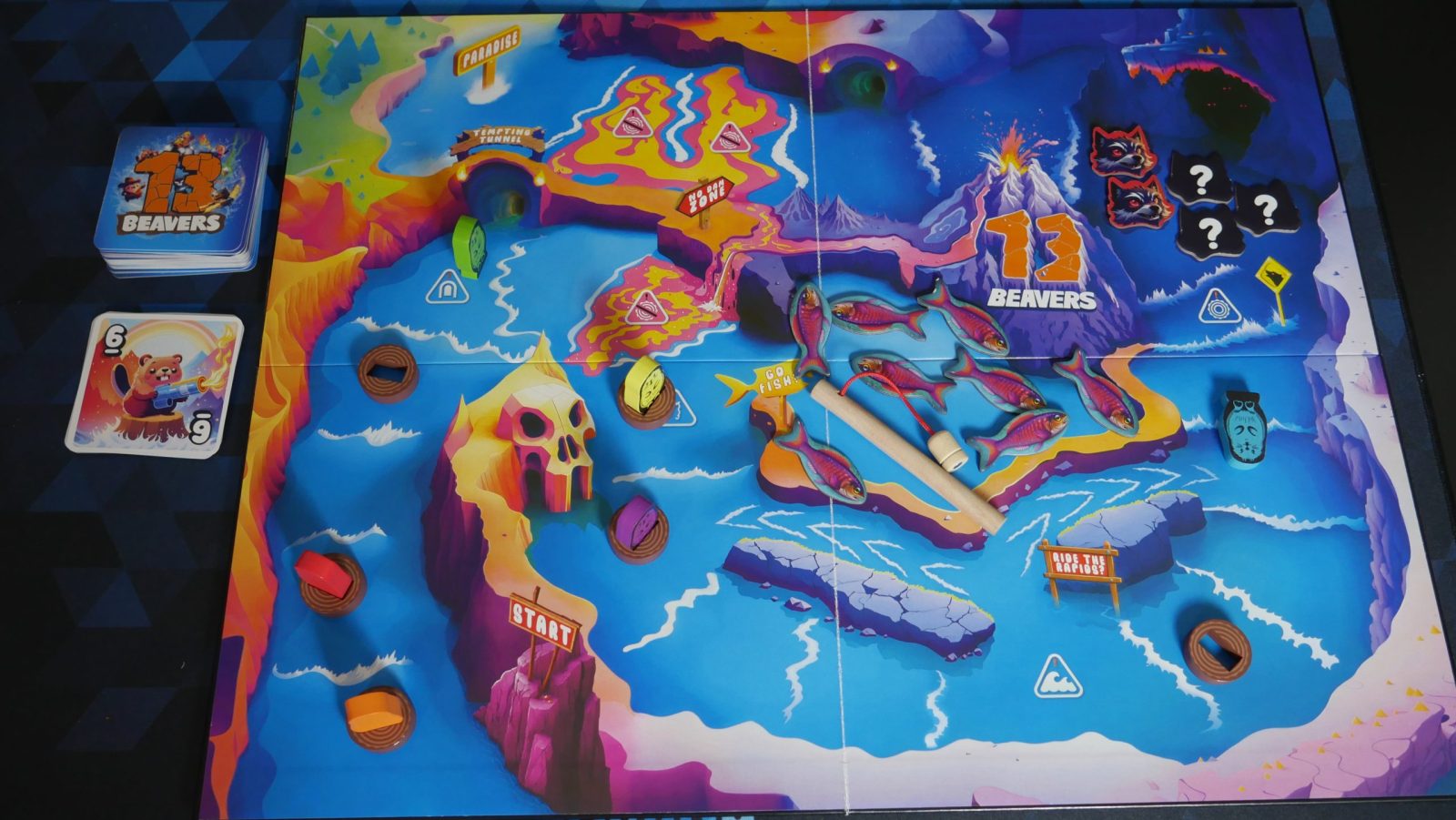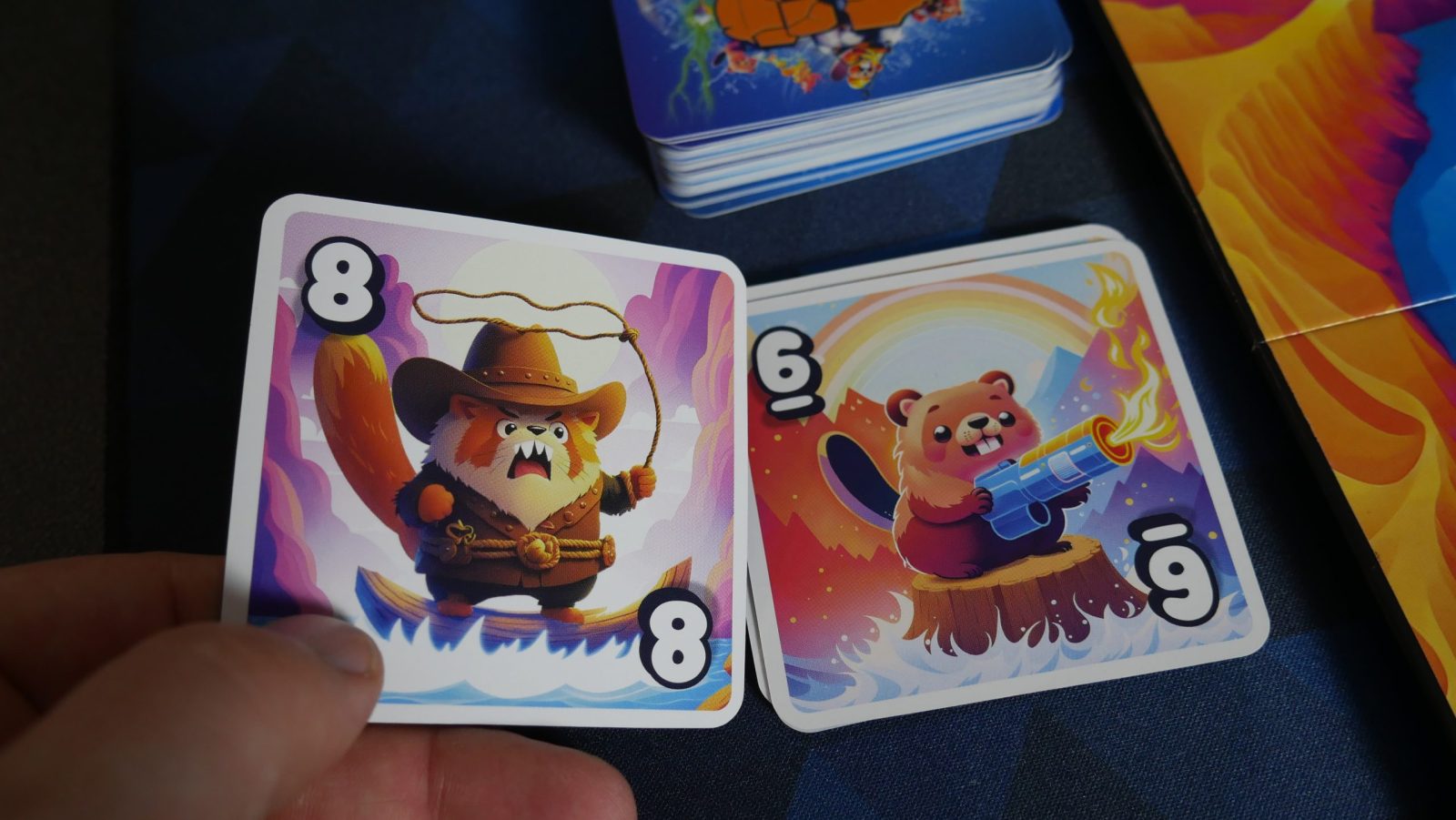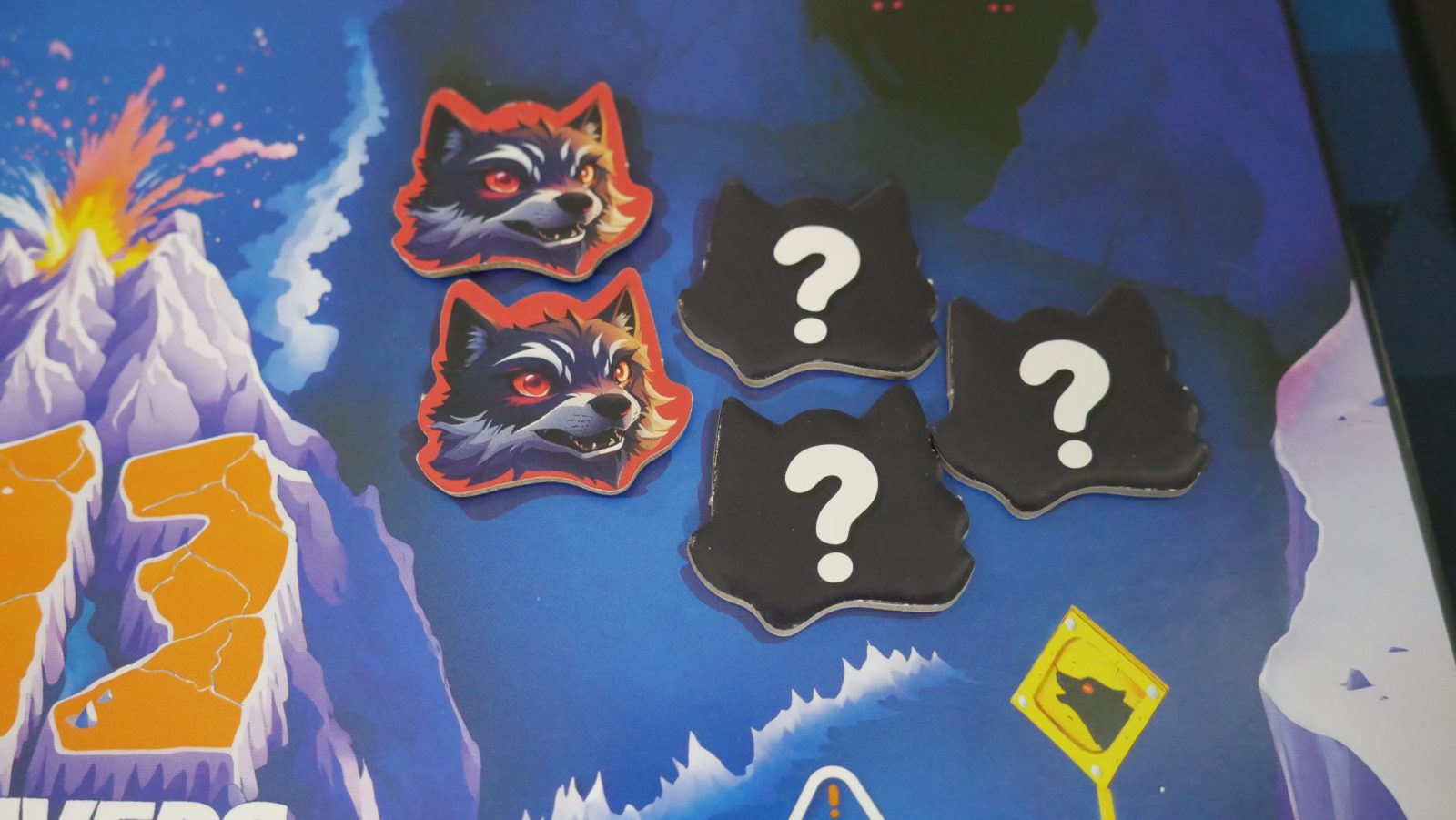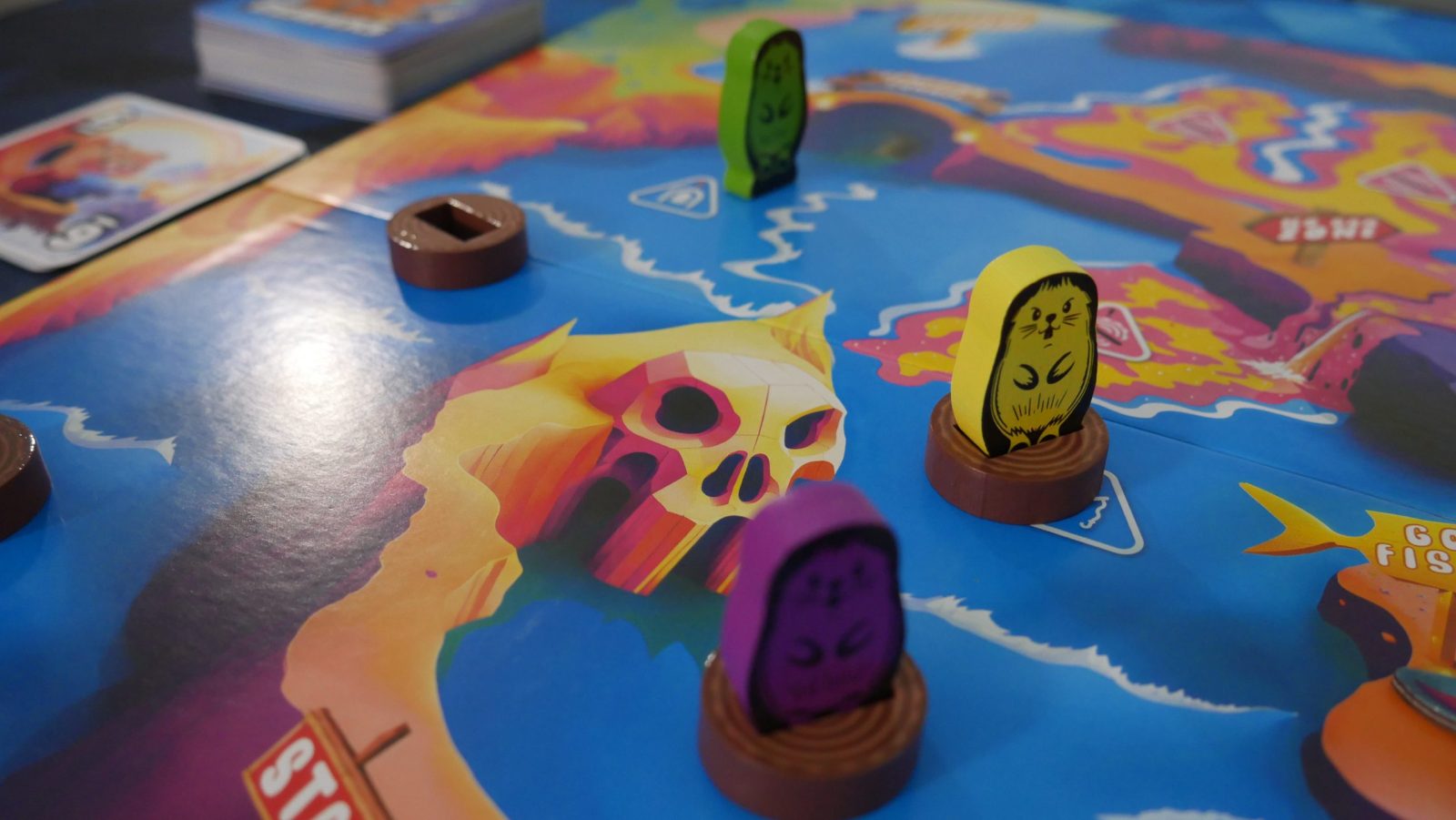
Beavers is a kids and family game from tabletop giant Asmodee. As the resident reviewer of family games at GamingTrend I am always looking for games that I can play with my kids and they are eager to try them out. How does 13 Beavers stand up to short attention spans and a rudimentary understanding of the English language? Let’s find out.
Simplified to its main mechanisms, 13 Beavers is a push-your-luck game that teaches probability with some extra random bits added in. A game that teaches fundamental math skills is a great idea, but is it fun?

The goal of the game is to be the first player to get your Beaver to the end of the river. Using a deck of cards with numbers ranging from 1 to 13, you move along the river by correctly guessing if the next card that you flip will be a higher or lower number than the current face-up card. If you guess correctly, you get to move forward one space and then decide to either keep going or end your turn. You can keep going as long as you keep guessing correctly, but one wrong guess will send you back to where you started for that turn. Ending your turn without being wrong moves your beaver’s log (starting point) up to your current position for the next turn.

Along the river path are several additional obstacles and things to interact with. Just a few spaces along the path is a shortcut that will skip almost the entire river but it comes at a pretty big risk. Rather than the normal high/low guess, you must guess the exact number that will be flipped. If you are wrong, you go back to the start of the river regardless of where your log is. A little further along is a fishing spot, complete with magnet fish and a tiny fishing rod. The fish will either be rotten and send you back a few spaces or provide one-time bonuses for double movement or the ability to rewind your turn. Go a little further and you will find some rapids that can send you shooting forward or backward depending on your guess at the entrance. The rapids are followed by a cave of sleeping wolf tokens that will stop you in your tracks until you flip the wolf that doesn’t wake up and clear the path for everyone. There are also patches of lava spread throughout the river that require you to take another turn. No stopping in the pool of lava.

Playing 13 Beavers with kids ranging from 3 to 8 was an interesting experience. The box lists 7 as the minimum age, but I found younger kids could mostly understand what was going on. The idea of guessing high or low mostly resonated across the age group, but the fish and wolves proved an irresistible distraction from the game for the younger kiddos. Most of the kids were not quite able to grasp the increasing risk of pushing your luck as you get further and further from your log resulting in quite a few instances of the younger ones never making it much farther than the first bend without being encouraged to stop their turn and save their place. Across the board though, they all had fun. Each card flip is a micro instance of excitement and reward or dismay. The magnet fishing is just a fun toy factor and the wolves appear as a real threat. Toss in the chunky and colorful wooden beavers and it was a hit.

What about the adults playing? Ooof. Finding kid’s games that aren’t painful for the adults involved is pretty hard. Mostly that’s ok. I’m playing these games to help my kids learn game mechanics and life lessons on teamwork and winning and losing with grace. I’m not there to have a great gaming experience for myself. It’s just a nice bonus when those things can line up. That didn’t happen with 13 Beavers. For starters, the path is just entirely too long causing the game that is really just one mechanical action happening over and over again to wear out its welcome. That is compounded by the randomness of things like the fish sending you backward or the wolf cave that stops the game and acts as a break for anyone leading by too much and can grind the game to a halt if you don’t get lucky and find the correct wolf quickly. The core mechanism being based on probability can also cause annoying setbacks. The current card is 12, so pretty safe to guess the next card is lower? Well, too bad, it’s a 13. The card counters among you may be able to keep track of how many 13s have been flipped so far and how many cards are in the deck and whatever else but that isn’t me and oh boy is it demoralizing to have those setbacks in a game that you already aren’t really enjoying. But like I said, it’s for the kids so I power through.
At the end of the day, 13 Beavers is a fine kids’ game. It teaches and reinforces a foundational math skill and has a fun theme and artwork that keeps the kids engaged. It’s not something I would ever pull off the shelf unless asked, but it’s not Candy Land either, so I’ll take my victories where I can. If you can facilitate games without needing to enjoy them yourself then your family can likely have a good time with this one. The kids loved it so despite my own experience with it; I think it succeeds and deserves a look.
13 Beavers
Good
13 Beavers teaches kids about probability with a fun theme and bright artwork. It can overstay its welcome for the adults at the table but my kids loved every bit of it.
Pros
- The kids loved it
- Bright and colorful artwork
- Teaches math skills
Cons
- Not very interesting for the adults
- A bit too long
